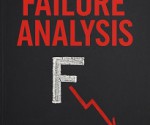UPSC Answer Evaluation Programme 2025 and why is it essential for aspirants?
UPSC Answer Evaluation Programme 2025 and why is it essential for aspirants?
Writing practice alone isn’t sufficient. Feedback from experts is crucial to identify missing dimensions like structure, depth, use of keywords, or critical analysis. Evaluation bridges the gap between preparation and actual exam performance.
-
Preeti, a second-attempt aspirant, wrote 100 GS answers but kept scoring poorly. After joining a personalized answer evaluation programme, she learned she was not linking current affairs examples. Her score improved by 25 marks in GS2.
-
Rahul, despite strong content, was failing to complete all answers. Evaluators pointed out excessive introductions. By tightening his introductions, he finished the paper and scored 115 in GS1.
-
Sakshi struggled in Ethics. Through evaluation, she discovered she was using abstract theory without case studies. Post-correction, her Ethics marks jumped from 92 to 128.
EXAMPLE: Q.Critically Examine the Endorheic (Inland Drainage) System of Haryana and Its Implications for Flood Management and Groundwater Recharge . Haryana, a semi-arid to sub-humid state in northwestern India, is marked by both exorheic (outward-flowing) and endorheic (inward-draining) drainage systems. The endorheic or inland drainage system is predominantly found in the southwestern parts of the state, especially in districts like Mahendragarh, Rewari, Charkhi Dadri, Bhiwani, Fatehabad, and Hisar. This system is characterized by seasonal rivulets, ephemeral streams (such as the Sahibi and Dohan), and depressions like the Dohan Basin and depressional zones around Jhajjar, which fail to reach the sea and instead drain into inland basins or disappear into the sandy soil. Characteristics of the Endorheic Drainage System The endorheic system in Haryana is mainly fed by monsoonal rainfall. The ephemeral streams arising from the Aravalli hills, such as the Sahibi, Krishnavati, and Dohan, carry water only during heavy rains and eventually terminate in playas, saline depressions, or percolate into the ground. The Najafgarh drain and the seasonal depression of the Bhindawas and Sultanpur wetlands are also part of this inland system. Because of the low gradient and sandy soil, water tends to stagnate or get absorbed rather than flow away, leading to the creation of wetlands, salt pans, and seasonal ponds. The inland basins lack permanent outlets, which significantly affects the hydrology of the region.
Implications for Flood Management
- Localized Flooding: The absence of a well-developed outlet system causes water accumulation in depressions during intense monsoon rains. This leads to waterlogging and flash floods in low-lying areas like Jhajjar and Rohtak.
- Drainage Constraints: Inadequate artificial drainage infrastructure exacerbates the problem. The natural endorheic nature makes engineering drainage solutions challenging, as excess water has no natural outlet to rivers or the sea.
- Urban Flooding: In urbanizing regions like Gurugram and Faridabad, which fall partly within this endorheic zone, the conversion of wetlands and low-lying natural depressions into built-up areas increases runoff and reduces water absorption, making them more flood-prone.
Implications for Groundwater Recharge
- Natural Recharge Zones: Inland basins act as crucial recharge zones. The percolation of water from depressions and ephemeral streams helps replenish groundwater in arid and semi-arid zones. Regions like Mahendragarh benefit from this natural recharge mechanism.
- Salinization Risk: However, poor drainage and high evaporation rates can lead to accumulation of salts, causing soil salinization and affecting groundwater quality.
- Overextraction vs Recharge: While the endorheic system promotes recharge, rampant groundwater extraction—especially for irrigation—exceeds the natural replenishment rate, causing long-term aquifer depletion. Parts of southern Haryana are already classified as ‘over-exploited’ zones by the Central Ground Water Board (CGWB).
Conclusion The endorheic drainage system of Haryana presents both opportunities and challenges. While it plays a critical role in groundwater recharge, it complicates flood management due to the lack of natural outlets and poor urban planning. Addressing these dual challenges requires integrated watershed development, revival of traditional water bodies, wetland conservation, and artificial recharge initiatives like check dams and recharge wells. A region-specific, hydro-ecological approach is essential for sustainable water management in this fragile endorheic ecosystem.
Feedback from experts :
Your answer provides a well-structured and comprehensive overview of the Endorheic (Inland Drainage) System of Haryana, touching on both flood management and groundwater recharge. Here’s a critical evaluation based on UPSC mains answer-writing standards (especially for GS Paper 1/GS Paper 3-style analytical questions):
Strengths of the Answer:
1. Structured Format
-
The answer flows logically with clear subheadings:
-
Introduction
-
Characteristics
-
Implications for Flood Management
-
Implications for Groundwater Recharge
-
Conclusion
This structure enhances readability and helps examiners quickly locate key points.
-
2. Factual Accuracy & Regional Examples
-
Accurate mention of specific rivers (Sahibi, Dohan, Krishnavati) and regions (Mahendragarh, Jhajjar, Gurugram) shows good regional knowledge.
-
Referring to Bhindawas and Sultanpur wetlands adds ecological depth.
3. Balanced Evaluation
-
You covered both positive (recharge potential) and negative (salinization, urban flooding) aspects, reflecting critical thinking, not mere description.
4. Use of Technical Terms
-
Terms like playas, ephemeral streams, salinization, and reference to CGWB classifications demonstrate strong command over hydrological concepts and planning language.
5. Solution-Oriented Conclusion
-
The conclusion is forward-looking, suggesting sustainable interventions such as check dams, recharge wells, and wetland revival. This gives your answer a policy relevance edge.
Areas for Improvement:
1. Maps or Diagrams (if permitted)
-
In a real UPSC Mains exam, adding a simple sketch map of Haryana showing the endorheic zone (Southwest districts and river paths) would enrich the presentation. Visuals add instant clarity.
2. Link to Climate Change / Desertification
-
Brief mention of climate change increasing rainfall variability or desertification risk in these areas would deepen the analysis.
3. Mention of Traditional Systems
-
You hinted at this in the conclusion, but elaborating on traditional water systems (e.g., Johads, Baoris) earlier in the groundwater section could show deeper understanding of local adaptation strategies.
4. Citation of Policy Frameworks (optional)
-
Mentioning Atal Bhujal Yojana, Jal Shakti Abhiyan, or Haryana’s State Action Plan on Climate Change (SAPCC) in 1–2 lines could have made the policy suggestions more robust.
Final Evaluation:
| Criteria | Evaluation |
|---|---|
| Relevance | Excellent |
| Structure & Organization | Excellent |
| Critical Depth | Very Good |
| Examples & Data | Strong |
| Presentation (Map/Visual) | Could be improved |
| Innovation / Value Addition | Good (especially conclusion) |
















